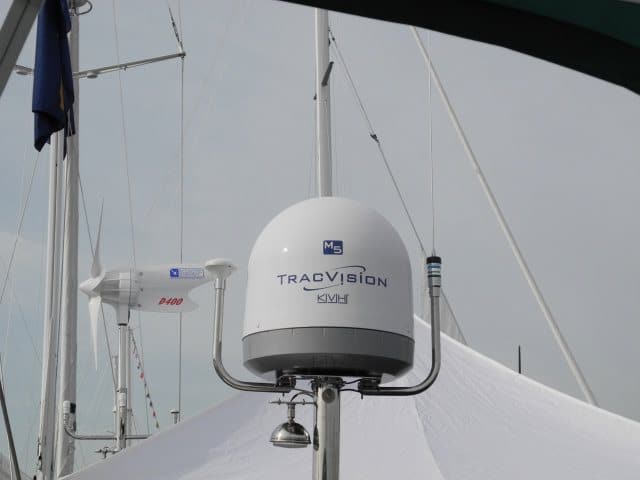I spent yesterday with a group of sales and service people from one of our major industry suppliers (IMTRA) of high-end equipment like LED lighting solutions, seating, anchor windlasses and bow thrusters as well as windshield wiper systems. One of the questions they wanted answers on was what constitutes appropriate separation for antennas on boats to ensure that mysterious “cross talk” interference from one system to another doesn’t occur.
One of my books, Advanced Marine Electrics and Electronics Troubleshooting does cover this topic. Using the photo above to at least cover a part of this subject we see a GPS, Satellite TV and VHR antenna lined up on a nice stainless steel mounting post. What we see here is really pretty marginal, at least based on NMEA’s own installation standards. According the standard, Satellite TV antennas should be three feet away from VHF antennas and GPS antennas and VHF antennas need to be no less than three feet away from GPS antennas.
So, with the above installation, it looks like We might be OK, with the GPS and VHF separation, but the Sat TV is a little tight with both the VHF and the GPS. Frankly, this is a really common problem due to the limited amount of real estate on most boats. So, do we really have a problem here? Maybe not and maybe yes.
Testing of all the systems for any cross talk or interference is the only way to know for sure. My guess is that the NMEA was acting quite conservative when they established their requirements. What’s the bottom line here? Always test the operation of the equipment and always do this with everything up and running so that any cross-talk or RFI can be picked up and dealt with. If interference is noted, then you’ll have to reconsider where the antenna get mounted.









